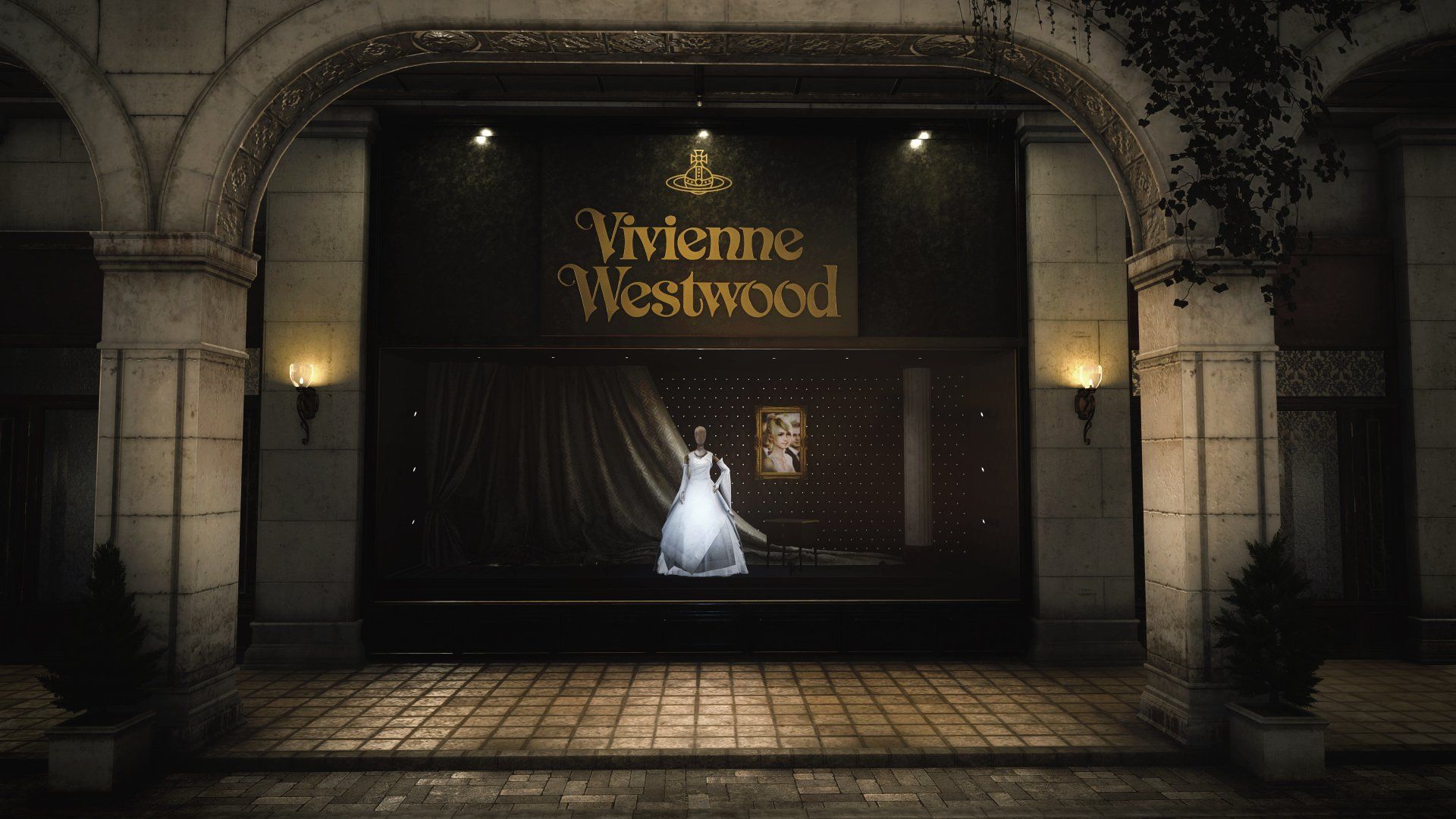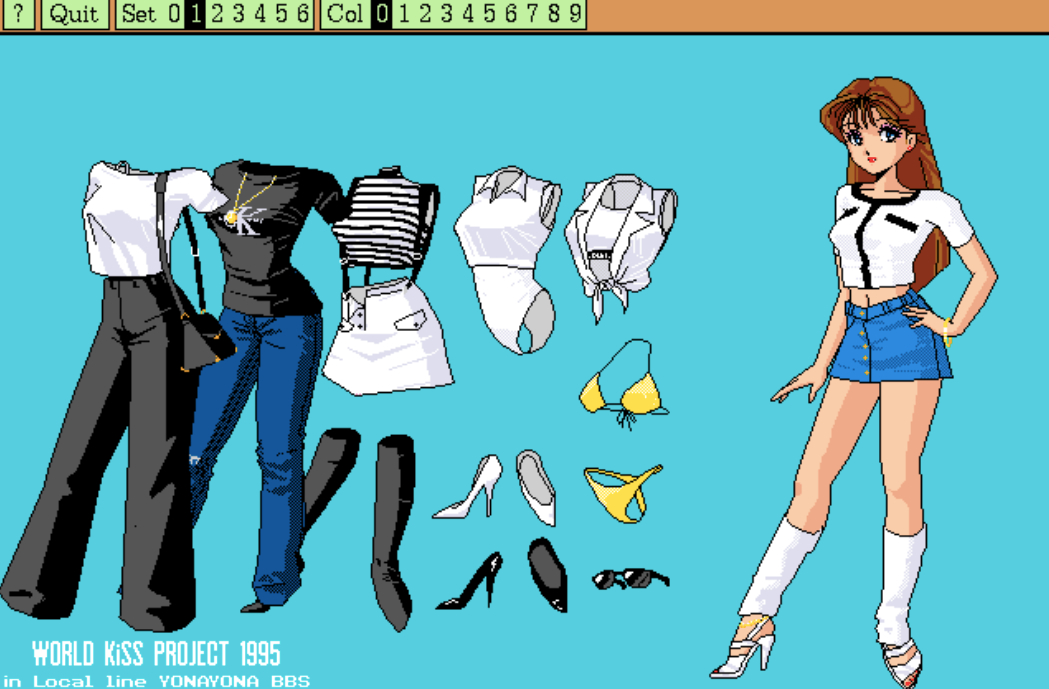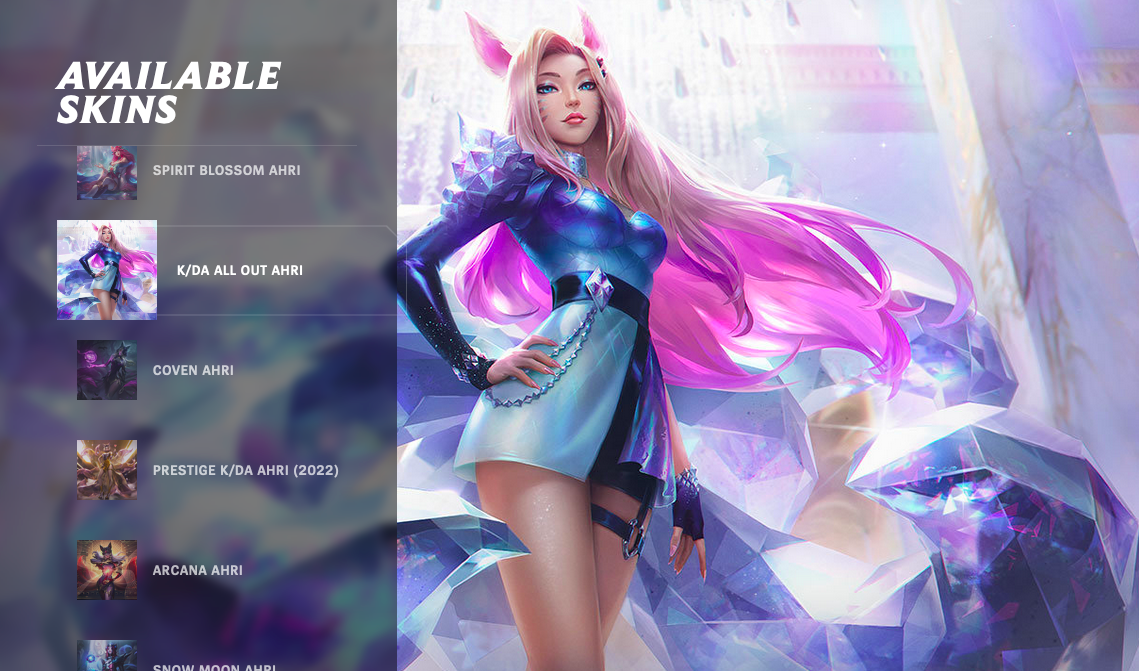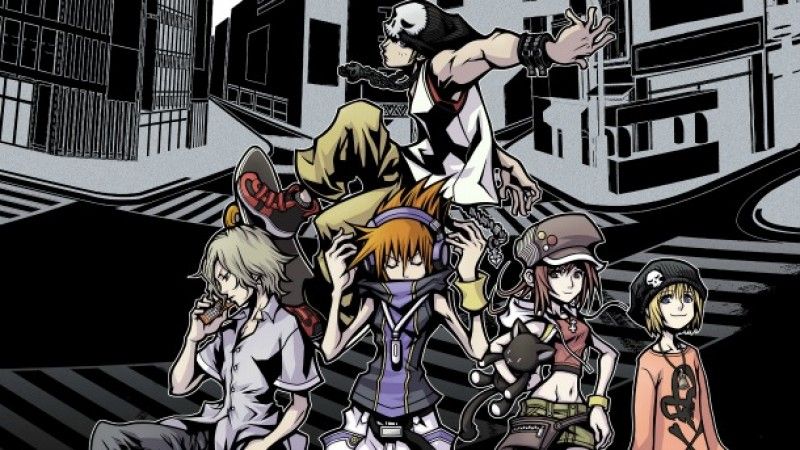Lux Machina: The Couture of Video Games
It's not just how you play, it's how you look

In game design, character is crucial.
Not character as in the actual player – at least, not necessarily – but character as in the spirit of a thing, the elements that go about us visualizing their personality, their place in the narrative, what kind of world they exist in, and what kind of story they hope to tell. Think of something as simple yet iconic as Kingdom Hearts' Sora and his belts, chains, and big ol' goofy shoes. The flopping slap of his steps is part of the charming, Disney-cartoon-inspired design of the original 2002 release and subsequent titles.
Compare that to Kingdom Hearts IV's revelation in 2022, in which Sora traded his clown shoes for regular sneakers. This coincided with a slick, less whimsical art direction steeped in a monochromatic austerity. And it certainly skewed more towards modern futurist minimalism; if you check out Japanese clothier SuperGroupies, the Kingdom Hearts page features refined silhouettes that have a palpable luxury in realism while maintaining director Tetsuya Nomura's distinctive brand of grungy rebellion.
The crossover approach to gaming fashion is nothing new: character designers work with fashion to an exceptionally detailed degree, replicating trends and runway ideas to give characters distinct styles that coincide with the game's vision. Tetsuya Normura's designs were inspired by particular trends in the early 2000s. Designers collaborate increasingly with game devs to create and implement both original and branded material to either showcase the pieces or compose them with the game's "feel" in mind. Games have been inspired by, and have been the inspiration for, the fashion scene for some time now. In 2021, Balenciaga released a virtual fashion show. Gaming and high fashion are one. How did we get here, and how does gaming, as a medium, use fashion itself?
Dressing the Digital Self
As a teenager, I was obsessed with Project Runway. The Bravo original began in 2004 and is still currently airing with a new 20th-anniversary special season this year. I haven't kept up at all on recent seasons, but 2005 - 2007 was a sweet spot for the Runway, and I tuned in weekly to anticipate the designs and gush over and rally for or against particular artists. I would often heap praise one week and then lash out the next, loudly protesting – while sitting slouched in my t-shirt and Soffe shorts – that I'd never touch such a travesty. As if!
The cut-throat, prowling drama of the fashion world was compelling and devilish, a sentiment reflected timely in 2006's The Devil Wears Prada, which featured stellar performances by Meryl Streep as a sly fashion maverick and Anne Hathaway as an eager assistant. Apart from being a deliciously cruel and curt portrait of ambition's poise and its merits and faults, it fostered a particularly untouchable view of fashion: this thing seen in a window, haute and high-end, relentlessly unaffordable, recklessly artistic, and yet – somehow, despite the contempt it held for impecuniosity – vividly gravitational.
Digital landscapes were where fashion became more readily accessible to the average person, although it was still a window through which to witness; this time, though, allowing for player participation. Digital fashion games were a playground where you could pull garments from the void, featureless mannequins in the store, and wear them on a representative and often expressive digital avatar. This is the concept that game engineers explored as early as the 1990s, with the introduction of "dress-up" games that mimicked the allure of Barbie. While inevitably marketed to young girls, dress-up games were far from the high-fashion exports of today, relying instead on a more "paper doll" approach, allowing players to dress their avatars in rudimentary (often derivative of larger trends) mix-and-match styles.

"Naturally, Mattel was one of the first companies to start producing what tech and culture critic Justine Cassell refers to as “Pink Software,” games designed with stereotypical girly motifs. Mattel’s first Barbie title was a dress-up game creatively named Barbie. The plot is this: Ken gives you a call and asks you out on a date; you then go shopping, picking situational garments appropriately. This design uses clothing as puzzle pieces, where a correct combination triggers a new puzzle." – The Awfulness and the Importance of the Dress-up Game by Mariam Naziripour
The idea of a digital avatar was a relatively new concept at the time, and these iterations of the "paper doll" playstyle were less representative of the player and more of an interface through which to explore styling combinations. But they would go on to meld well with the eventual rise of the digital avatar, with sites like Stardoll, Gaia Online, and IMVU allowing players to creatively dress and embellish their online personas to an exceptionally detailed degree. This differs from character creators that deal more with physical characteristics; while there is customization in these games for skin color, hair color, and occasionally body type, they are far less important than what the avatar eventually wears.
This focus on fashion in these social-network forums was not necessarily gender-codified, although the early adopters skewed heavily towards young girls and women, and they provided an opportunity for brands to use online spaces to advertise to audiences. The digital avatar as a medium through which the fashion world could operate became less a fad and more a norm, digitizing window shopping and lowering the barrier of entry. Replicating the luxurious designs in pixels allowed for a larger, easier, and more affordable adoption of the brand. The Sims, first released in 2000, would become a playground for fashion brands to experiment with the concept of pay-to-wear. From there, fashion and virtual spaces would only continue to twine alongside one another, strands of the same creative DNA.
High-Level Fashion
In 2016, Final Fantasy XIII's Lightning (aka Claire Farron) became an official model for Louis Vuitton. The Series 4 spring-summer 2016 campaign was a collaborative effort among several artists including character designer Tetusya Nomura. Lightning would feature in several advertisements that year, and would even be interviewed by the Telegraph (yes, they actually interviewed Lightning). Her adoption into the fashion scene is likely thanks in part to a market now more amenable to video games and a creative industry newly fascinated by them, a perhaps prescient permutation.

The feat wouldn't be a one-off either – Final Fantasy XV, released towards the end of that same year, featured a wedding dress designed by the storied punk-queen Vivienne Westwood. Players of FFXV could actually go and see the dress in-game at the Venice-like locale of Altissia, cooing with the NPC onlookers at its beauty and complimenting it in a way that felt akin to advertising. And I gotta say, Noctis staring up at the name Vivienne Westwood hot off a cross-country trip fighting imperial soldiers, riding chocobos, and taking down elusive fantasy creatures felt a little surreal.
But perhaps this is a natural meeting point, with the unreality of high fashion meeting the conceptual experimentation of style in video games. The creative director of the fashion brand Roen – Hiromu Takahara – designed the clothing for the four main protagonists of the game as well and sold the real-life designs for upwards of $2,117.
Brands like Balenciaga and Gucci have teamed up with various developers to release limited edition sets of specifically online (and offline) clothing and accessories for a premium cost, giving players the ability to nab in-game wear to showcase as a symbol of status or longevity of play. And it isn't just the industry giants – games such as Dead by Daylight, Fornite, and League of Legends offer increasingly non-brand but fashion-forward choices to help display character individuality or, in the case of pre-made "skins", showcase the various external collaborations of the game.

"Many of our character concept artists have a background in fashion, and they look at the runways and fashion designers for inspiration,' says Robert [Jo-Ashley Robert, associate producer for Dead by Daylight], adding that a new character can take anywhere from two to three months to create. 'We want to do storytelling through the clothing. We did that for The Trickster, our K-pop-themed killer [who wears a feather-shouldered evening coat, among other pieces] (sic). He’s a showman, so we looked at the big Korean fashion designers."
Video Games Are Becoming a High-Fashion Playground by Christian Alla
Style By Design
The nature of games means that, occasionally, a character's fashion choice is not merely static, and players have input on their fit. There are myriad examples where play and level integration are affected by the user's selected garments. These choices can range from equipped gear providing buffs in certain weather conditions to how the game world reacts to fashion choices and a character's ability to wear them. For the former look no further than the recently released Legend of Zelda: Tears of the Kingdom. Cold and hot weather gear are a way to navigate the various climates of the game, but these aren't necessarily...fashionable choices. Having fashion as the focus is something that games do more rarely, and was something prevalent in Square Enix's The World Ends With You.
Shortened to TWEWY, the RPG explicitly converses with its urban fashion elements and the grounds that seeded them, welcoming players to explore the tight but still sprawling Shibuya neighborhood. It was released in 2008 on the Nintendo DS system and starred a headphone-wearing protagonist named Neku playing in a game of death, helped or hindered by others trapped in the same high-stakes game, all fighting against street-art-inspired enemies called "Noise."

There was a deliberate and confident style to TWEWY, with the devs pulling from the then-modern-day fashions being worn in Shibuya. It was a manicured urbanity that differed from – but also had been heavily inspired by – America's streetwear. Not only did the static fashion of the characters showcase their personalities and the game's sense of individuality, but equipping branded clothing also impacted gameplay.
"Establishing trends and feeling out which brands are fashionable where is important for gameplay. Wear [clothing brand] Wild Boar 104 in an area of Shibuya where it’s more popular and you'll see a significant stat buff when fighting Noise. Sometimes Neku isn’t cool enough yet to wear something from Tigre Punks. However, the Pins that Neku and the rest of the Players use to harness the power of Psych abilities and fight the Noise are associated with these clothing brands."
Story and Street Style Converge in The World Ends With You by Ria Teitelbaum
Other games like Final Fantasy XIV or World of Warcraft don't often feature a style-oriented system, but the depth of their customization fosters a thriving fashion-centric community. "Glams" – the combination of various outfit pieces, carefully curated – is perhaps the final endgame of FFXIV. This is connected to the fact that FFXIV's gear has tactical importance. Having "BiS" - Best in Slot - means that each piece of gear you equip to a designated area (chest, head, hands, etc.) is the absolute highest item level accessory that you can have, but you're stuck with that design unless you glam - or mirror other pieces – over it. There are entire sites dedicated to glamorizing your character and celebrating the designs of other player characters. And the fact that gear is connected to stats and achievable through daily tasks and high-end content is important, conceptually, for game-makers: it creates purpose.
So whether players don high-end brands or experiment with how impactful fashion can be on character choices (as well as infamously ruining the vibes to cutscenes), fashion's foray into gaming has proven to be more than a flash in the pan. It's a new way to wear, a new way to style, and, perhaps above all else, a new way to express who we like to be seen as at any given moment. It introduces us to new ideas and can impact how we dress in real life and what fashions bubble up around these wellsprings of popular culture – which is something that's already actively happening.
The evolution of how fashion impacted gaming is easier to trace than most because the ideas colluded around player impact and autonomy. Games are allowing fashion designers to pursue the "rule of cool", as there are some things that simply can't be replicated in a realistic or practical way offline. But in-game? Well, Sora's goofy shoes are just part of the charm.
